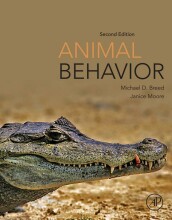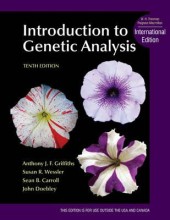The inheritance of complex traits
38 important questions on The inheritance of complex traits
Half the difference between the mean of the phenotypic values for the homozygous genotypic classes at a QTL.
The part of the genetic variance for a trait in a population that is predictably transmitted from parent to offspring
A method for locating quantitative trait loci in the genome based on linkage disequilibrium between a marker locus and the quantitative trait locus in a random-mating population.
- Higher grades + faster learning
- Never study anything twice
- 100% sure, 100% understanding
The part of an individual’s deviation from the population mean that is due to additive effects and is transmitted to its progeny.
The proportion of total phenotypic variance at the population level that is contributed by genetic variance.
A gene that, because of its chromosomal position or some other property, becomes a candidate for a particular function such as disease risk.
A trait for which individuals can be sorted into discrete or discontinuous groupings, such as tall versus short stems for Mendel’s pea plants.
The type of inheritance exhibited by traits affected by a mix of genetic and environmental factors. Continuous traits, such as height, typically have complex inheritance.
Strains or stocks of a species that are identical throughout their genomes except for a small region of interest.
A trait that can take on a potentially infinite number of states over a continuous range, such as height in humans.
The tendency of one variable to vary in proportion to another variable, either positively or negatively.
A statistical measure of the extent to which two variables change together. It is used in computing the correlation coefficient between two variables.
Difference of an individual trait value from the mean trait value for the population.
The difference between the trait value for the heterozygous class at a QTL and the midpoint between the trait values of the two homozygous classes.
The situation when the trait value for the heterozygous class at a QTL is equal to the trait value for one of the two homozygous classes.
The part of the phenotypic variation among individuals in a population that is due to the different environments the individuals have experienced.
Finding the genomic location of a gene of interest (or a functional region within a gene) with marker loci that are very tightly linked to it.
A “step curve” in which the frequencies of various arbitrarily bounded classes are graphed.
Interaction among alleles at a locus.
All of the genetic and environmental factors that influence a trait.
Association mapping that uses marker loci throughout the entire genome.
A stock consisting of genetically identical individuals that were fully inbred from a common parent(s).
A counting trait, taking on a range of discrete values.
A hypothesis that explains quantitative variation by proposing that traits are controlled by a large number of genes, each with a small effect on the trait.
The proportion of phenotypic variance that can be attributed to additive genetic variance.
A continuous distribution defined by the normal density function with a specified mean and standard deviation showing the expected frequencies for different values of a random variable (the “bell curve”).
Gene action under which the phenotype of heterozygotes is intermediate between the two homozygotes but more similar to that of one homozygote than the other.
The analysis of the genome of an individual to better understand his or her ancestry or the genetic basis of phenotypic traits such as his or her risk of developing a disease.
(1) A group of individuals that mate with one another to produce the next generation. (2) A group of individuals from which a sample is drawn.
A method for locating QTL in the genome and characterizing the effects of QTL on trait variation.
The subfield of genetics that studies the inheritance of complex or quantitative traits.
Any trait exhibiting complex inheritance because it is controlled by a mix of genetic and/or environmental factors.
A small group of individual members or observations meant to be representative of a larger population from which the group has been taken.
The difference between the mean of a population and the mean of the individual members selected to be parents of the next generation.
The amount of change in the average value of some phenotypic character between the parental generation and the offspring generation as a result of the selection of parents.
A form of inheritance in which only one (or a few) genes are involved and the environment has little or no effect on the phenotype; categorical traits often exhibit simple inheritance.
A categorical trait for which the expression of the different phenotypic states depends on a combination of multiple genetic and/or environmental factors that place an individual above or below a critical value for trait expression.
A statistical measure used to quantify the degree to which the trait values of individuals deviate from the population mean.
The question on the page originate from the summary of the following study material:
- A unique study and practice tool
- Never study anything twice again
- Get the grades you hope for
- 100% sure, 100% understanding
































